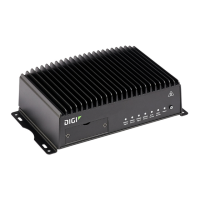IPv6
IPv6 is an updated version of the Internet Protocol (IP). Until recently, the Internet has used a
previous version, IPv4.
One of the reasons for IPv6 is the shortage of IPv4 addresses. Although Network Address Translation
(NAT), which allows users to use one public IPv4 address for a whole private network, has mitigated
this shortage to some extent, with more and more devices being connected to the internet, there are
not many IPv4 addresses left.
IPv4 addresses are 32 bits long. Over 4 billion addresses are available through IPv4, though not all the
addresses are usable. IPv6 addresses are 128 bits long. Taking into account the structure of the IPv6
address, there are 4.6x10
18
globally routable addresses available. This equates to approximately 650
million IP addresses for each person in the world.
Since every device can have a globally routable IPv6 address, there is no NAT with IPv6. This means it
is very important to properly configure IP filters and firewall rules to prevent direct attacks on hosts
on the LAN networks. By default, a TransPort device blocks any incoming IPv6 traffic not associated
with a connection established by a host on the LAN network.
IPv4 and IPv6 can co-exist on the same device. Each application can select the IP version to use. Some
services, such as web server or Simple Network Management Protocol (SNMP) can accept
connections on both IPv4 and IPv6.
TransPort devices support both IPv4 and IPv6 on WAN and LAN interfaces. Using IPv6 on WAN
interfaces requires an ISP that supports IPv6.
Common IPv6 address types
There are several common IPv6 address types, distinguished by their beginning characters:
Address type Beginning characters Description
Global routable addresses Either 2 or 3 Each device using IPv6
on the Internet has a
globally unique
routable IPv6 address.
Digi TransPort WR Routers User Guide
67

